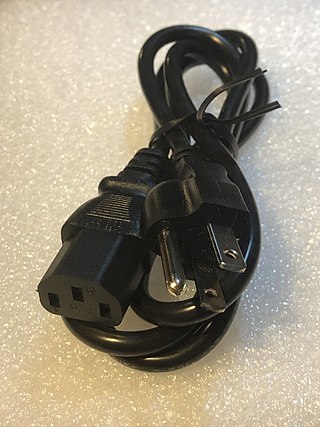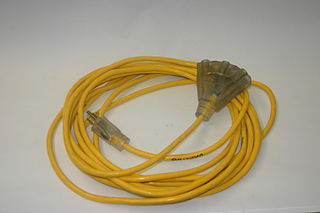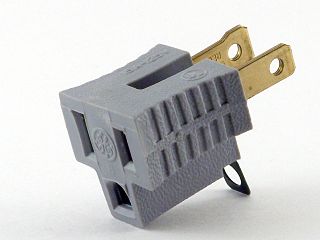Related Research Articles

In telecommunications and computing, backward compatibility is a property of an operating system, software, real-world product, or technology that allows for interoperability with an older legacy system, or with input designed for such a system.

In organic chemistry, a ketone is an organic compound with the structure R−C(=O)−R', where R and R' can be a variety of carbon-containing substituents. Ketones contain a carbonyl group −C(=O)−. The simplest ketone is acetone, with the formula (CH3)2CO. Many ketones are of great importance in biology and in industry. Examples include many sugars (ketoses), many steroids, and the solvent acetone.
The MIT License is a permissive software license originating at the Massachusetts Institute of Technology (MIT) in the late 1980s. As a permissive license, it puts very few restrictions on reuse and therefore has high license compatibility.

In organic chemistry, an acetal is a functional group with the connectivity R2C(OR')2. Here, the R groups can be organic fragments or hydrogen, while the R' groups must be organic fragments not hydrogen. The two R' groups can be equivalent to each other or not. Acetals are formed from and convertible to aldehydes or ketones and have the same oxidation state at the central carbon, but have substantially different chemical stability and reactivity as compared to the analogous carbonyl compounds. The central carbon atom has four bonds to it, and is therefore saturated and has tetrahedral geometry.

Butanone, also known as methyl ethyl ketone (MEK) or ethyl methyl ketone, is an organic compound with the formula CH3C(O)CH2CH3. This colorless liquid ketone has a sharp, sweet odor reminiscent of acetone. It is produced industrially on a large scale, but occurs in nature only in trace amounts. It is partially soluble in water, and is commonly used as an industrial solvent. It is an isomer of another solvent, tetrahydrofuran.
In computer programming, indentation style is a convention, a.k.a. style, governing the indentation of blocks of source code that is generally intended to convey structure.
In software engineering, a project fork happens when developers take a copy of source code from one software package and start independent development on it, creating a distinct and separate piece of software. The term often implies not merely a development branch, but also a split in the developer community; as such, it is a form of schism. Grounds for forking are varying user preferences and stagnated or discontinued development of the original software.

A power cord, line cord, or mains cable is an electrical cable that temporarily connects an appliance to the mains electricity supply via a wall socket or extension cord. The terms are generally used for cables using a power plug to connect to a single-phase alternating current power source at the local line voltage. The terms power cable, mains lead, flex or kettle lead are also used. A lamp cord is a light-weight, ungrounded, single-insulated two-wire cord used for small loads such as a table or floor lamp.
In chemical nomenclature, the IUPAC nomenclature of organic chemistry is a method of naming organic chemical compounds as recommended by the International Union of Pure and Applied Chemistry (IUPAC). It is published in the Nomenclature of Organic Chemistry. Ideally, every possible organic compound should have a name from which an unambiguous structural formula can be created. There is also an IUPAC nomenclature of inorganic chemistry.
In computing, a clone is hardware or software that is designed to function in exactly the same way as another system. A specific subset of clones are remakes, which are revivals of old, obsolete, or discontinued products.

In electrical and mechanical trades and manufacturing, each half of a pair of mating connectors or fasteners is conventionally assigned the designation male or female. The female connector is generally a receptacle that receives and holds the male connector. Alternative terminology such as plug and socket or jack are sometimes used, particularly for electrical connectors.

An extension cord (US), extension cable, power extender, drop cord, or extension lead (UK) is a length of flexible electrical power cable (flex) with a plug on one end and one or more sockets on the other end. The term usually refers to mains extensions but is also used to refer to extensions for other types of cabling. If the plug and power outlet are of different types, the term "adapter cord" may be used. Most extension cords range from around 2 to 30 feet in length although they are made up to 300 feet (91.44 m) in length.
A permissive software license, sometimes also called BSD-like or BSD-style license, is a free-software license which instead of copyleft protections, carries only minimal restrictions on how the software can be used, modified, and redistributed, usually including a warranty disclaimer. Examples include the GNU All-permissive License, MIT License, BSD licenses, Apple Public Source License and Apache license. As of 2016, the most popular free-software license is the permissive MIT license.
Alternative terms for free software, such as open source, FOSS, and FLOSS, have been a controversial issue among free and open-source software users from the late 1990s onwards. These terms share almost identical licence criteria and development practices.

NEMA connectors are power plugs and sockets used for AC mains electricity in North America and other countries that use the standards set by the US National Electrical Manufacturers Association. NEMA wiring devices are made in current ratings from 15 to 60 amperes (A), with voltage ratings from 125 to 600 volts (V). Different combinations of contact blade widths, shapes, orientations, and dimensions create non-interchangeable connectors that are unique for each combination of voltage, electric current carrying capacity, and grounding system.
License compatibility is a legal framework that allows for pieces of software with different software licenses to be distributed together. The need for such a framework arises because the different licenses can contain contradictory requirements, rendering it impossible to legally combine source code from separately-licensed software in order to create and publish a new program. Proprietary licenses are generally program-specific and incompatible; authors must negotiate to combine code. Copyleft licenses are commonly deliberately incompatible with proprietary licenses, in order to prevent copyleft software from being re-licensed under a proprietary license, turning it into proprietary software. Many copyleft licenses explicitly allow relicensing under some other copyleft licenses. Permissive licenses are compatible with everything, including proprietary licenses; there is thus no guarantee that all derived works will remain under a permissive license.

A free-software license is a notice that grants the recipient of a piece of software extensive rights to modify and redistribute that software. These actions are usually prohibited by copyright law, but the rights-holder of a piece of software can remove these restrictions by accompanying the software with a software license which grants the recipient these rights. Software using such a license is free software as conferred by the copyright holder. Free-software licenses are applied to software in source code and also binary object-code form, as the copyright law recognizes both forms.
BSD licenses are a family of permissive free software licenses, imposing minimal restrictions on the use and distribution of covered software. This is in contrast to copyleft licenses, which have share-alike requirements. The original BSD license was used for its namesake, the Berkeley Software Distribution (BSD), a Unix-like operating system. The original version has since been revised, and its descendants are referred to as modified BSD licenses.

The GNU General Public License is a series of widely used free software licenses, or copyleft, that guarantee end users the four freedoms to run, study, share, and modify the software. The license was the first copyleft for general use, and was originally written by Richard Stallman, the founder of the Free Software Foundation (FSF), for the GNU Project. The license grants the recipients of a computer program the rights of the Free Software Definition. The licenses in the GPL series are all copyleft licenses, which means that any derivative work must be distributed under the same or equivalent license terms. It is more restrictive than the Lesser General Public License, and even further distinct from the more widely-used permissive software licenses such as BSD, MIT, and Apache.

A cheater plug, AC ground lifter or three-prong/two-prong adapter is an adapter that allows a NEMA 5-15P grounding-type plug to connect to a NEMA 1-15R non-grounding receptacle. They are needed to allow appliances with 3-wire power cords to plug into legacy ungrounded receptacles found in older buildings. The use of such an adapter avoids the need to replace receptacles, but is potentially hazardous if the grounding tab is not connected to electrical ground. These adapters are illegal in some jurisdictions, in particular throughout Canada. A safer and more reliable alternative identified in the US and Canadian electrical codes is to replace the outlet with a Ground Fault Circuit Interrupter (GFCI) breaker outlet.
References
- 1 2 "JEP 277: Enhanced Deprecation". openjdk.java.net. Archived from the original on 19 September 2018. Retrieved 9 February 2018.
- ↑ Shea, Ammon. "A New Meaning of 'Deprecate'". Words We're Watching. Merriam-Webster . Retrieved 1 March 2023.
- ↑ Raymond, Eric S.; Steele, Guy L., eds. (July 1992). The Jargon File, Version 2.9.10 . Retrieved 1 March 2023– via Project Gutenberg.
- ↑ Stewart, Meghan (27 February 2023). "Windows client features lifecycle". What's new in Windows. Microsoft . Retrieved 1 March 2023.
- ↑ "On the future of smbfs". LWN.net. 15 May 2006. Retrieved 1 March 2023.
- ↑ GNU. "Line Input". The GNU C Library. GNU. Archived from the original on 26 January 2021. Retrieved 2 August 2008.
Deprecated function: char * gets (char *s). ... The
getsfunction is very dangerous because it provides no protection against overflowing the strings. The GNU library includes it for compatibility only. You should always usefgetsorgetlineinstead. - ↑ "Java Thread Primitive Deprecation". Oracle. Archived from the original on 15 October 2011. Retrieved 13 May 2011.
- ↑ Musciano, Chuck; Kennedy, Bill (2007). "HTML's Obsolete Expanded Font Handling". HTML & XHTML : the definitive guide (6th ed.). Beijing: O'Reilly. ISBN 978-0-596-52732-7. OCLC 77574682.
- ↑ Simenel, Éric (2000). "Carbonization 101". MacTech. Vol. 16, no. 12. Retrieved 1 March 2023.
- ↑ "The cross-platform streaming solution". VideoLAN. Retrieved 1 March 2023.
- ↑ "Brontosaurus Finally Validated as a Distinct Dinosaur". ABC News . Archived from the original on 9 April 2020. Retrieved 27 June 2020.
- ↑ Upchurch, Paul; Barrett, Paul M.; Dodson, Peter (2004). "Sauropoda". In Weishampel, David B.; Dodson, Peter; Osmólska, Halszka (eds.). The Dinosauria (2nd ed.). Berkeley: University of California Press. pp. 259–322. ISBN 0-520-24209-2.
- ↑ Nomenclature of Organic Chemistry : IUPAC Recommendations and Preferred Names 2013 (Blue Book). Cambridge: The Royal Society of Chemistry. 2014. p. 725. doi:10.1039/9781849733069-FP001 (inactive 1 June 2024). ISBN 978-0-85404-182-4.
{{cite book}}: CS1 maint: DOI inactive as of June 2024 (link)